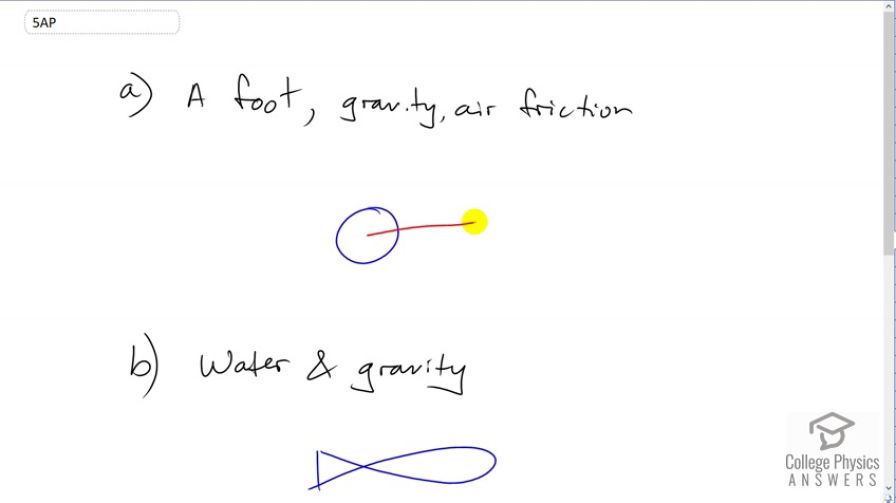Question
What object or objects commonly exert forces on the following objects in motion? (a) a soccer ball being kicked, (b) a dolphin jumping, (c) a parachutist drifting to Earth.
Final Answer
a) A foot, gravity, air friction
b) water, gravity
c) gravity, air friction, and wind.
Solution video
OpenStax College Physics for AP® Courses, Chapter 4, Problem 5 (Test Prep for AP® Courses)

vote with a rating of
votes with an average rating of
.
Video Transcript
This is College Physics Answers with Shaun Dychko. When a soccer ball is kicked, there are a number of forces acting on it. One could be the force due to the foot, maybe it's being kicked this way, force due to the foot. It could be gravity pulling down on it, force of gravity. Or there could be air friction which would oppose its motion, and if it was kicked to the right, then there'd be air friction going directly to the left opposing that motion. Okay. Then for a dolphin, there is the force exerted by the water on the dolphin and then there is the force due to gravity. So you get a force down due to gravity and then the water exerts a force on the dolphin and that could be to speed it up or to slow it down depending. So if the dolphin moves its tail and exerts a force on the water, the water will in turn exert an equal but opposite force on the dolphin because those will be pairs of two forces. You have the force due to the dolphin on the water, and then in turn you'd have the force due to the water on the dolphin and that could propel it forward. So it could be a force this way, force of propulsion through the water. Or, if it's colliding -- well or if it's moving at all, then there will be friction or a drag force on it. So if it's moving to the right say, then it could be a force to the left of, we can call it friction or drag force. That is also a buoyant force upwards which would probably balance gravity if it was not sinking. So, that again is force due to the water. There we go. Then we consider a parachuter. Parachuter has force of gravity downwards on it and if it's -- if this parachuter has released the parachute and is now falling at constant speed, then we could say that the drag force due to the parachute and the parachuter's body I suppose, would be of equal magnitude to the gravity in the opposite direction upwards. So the net force would be zero here if it's falling at constant speed. It could also be wind, could move the parachuter any direction here really, or the parachuter could go over a patch of warm air in which case they might even go upwards for a moment 'cause warm air rises. And there we go!